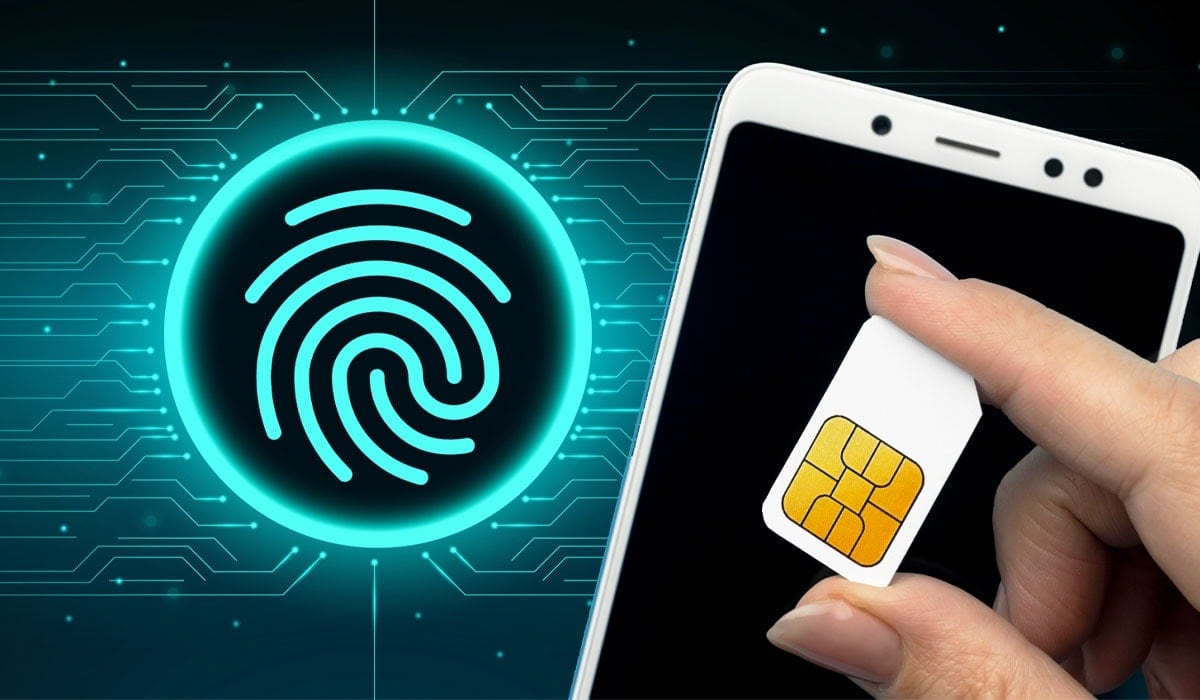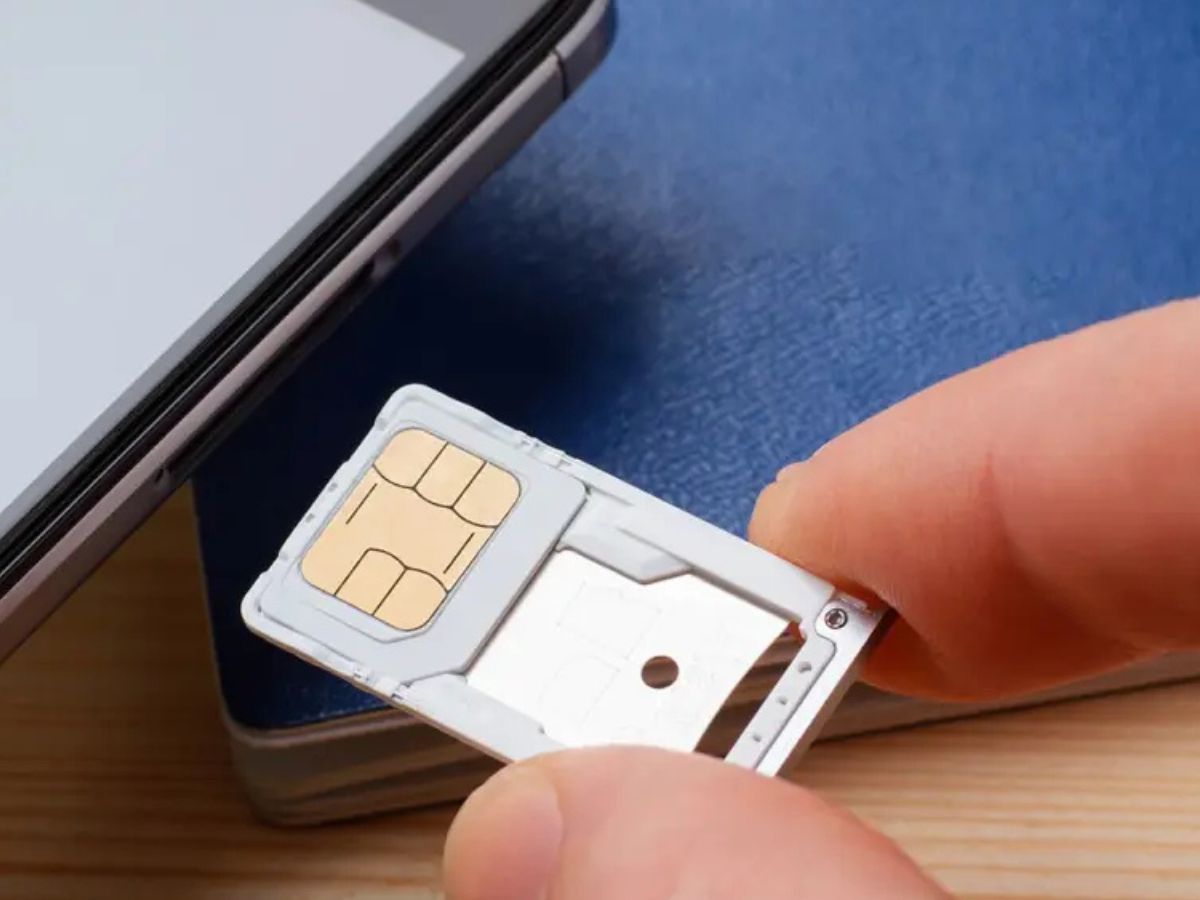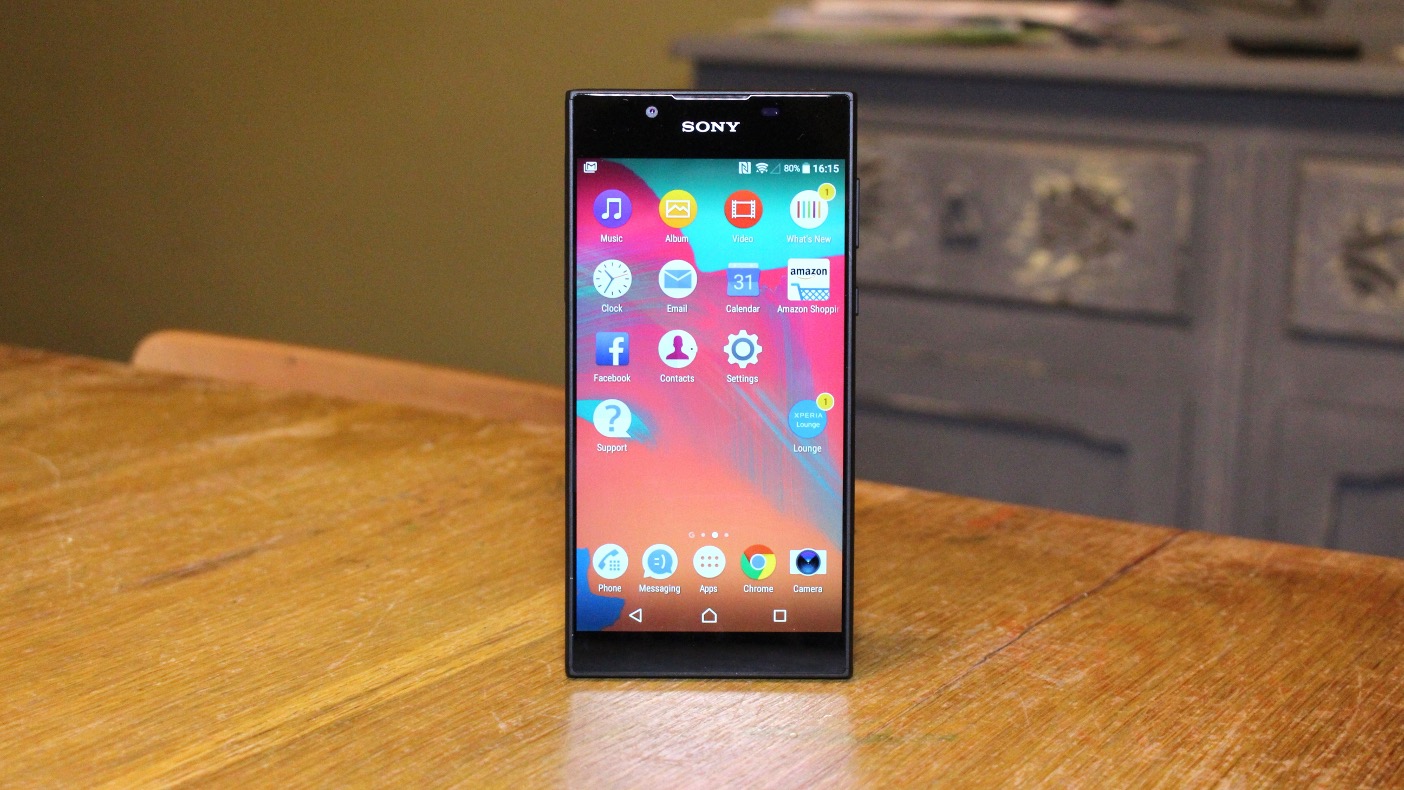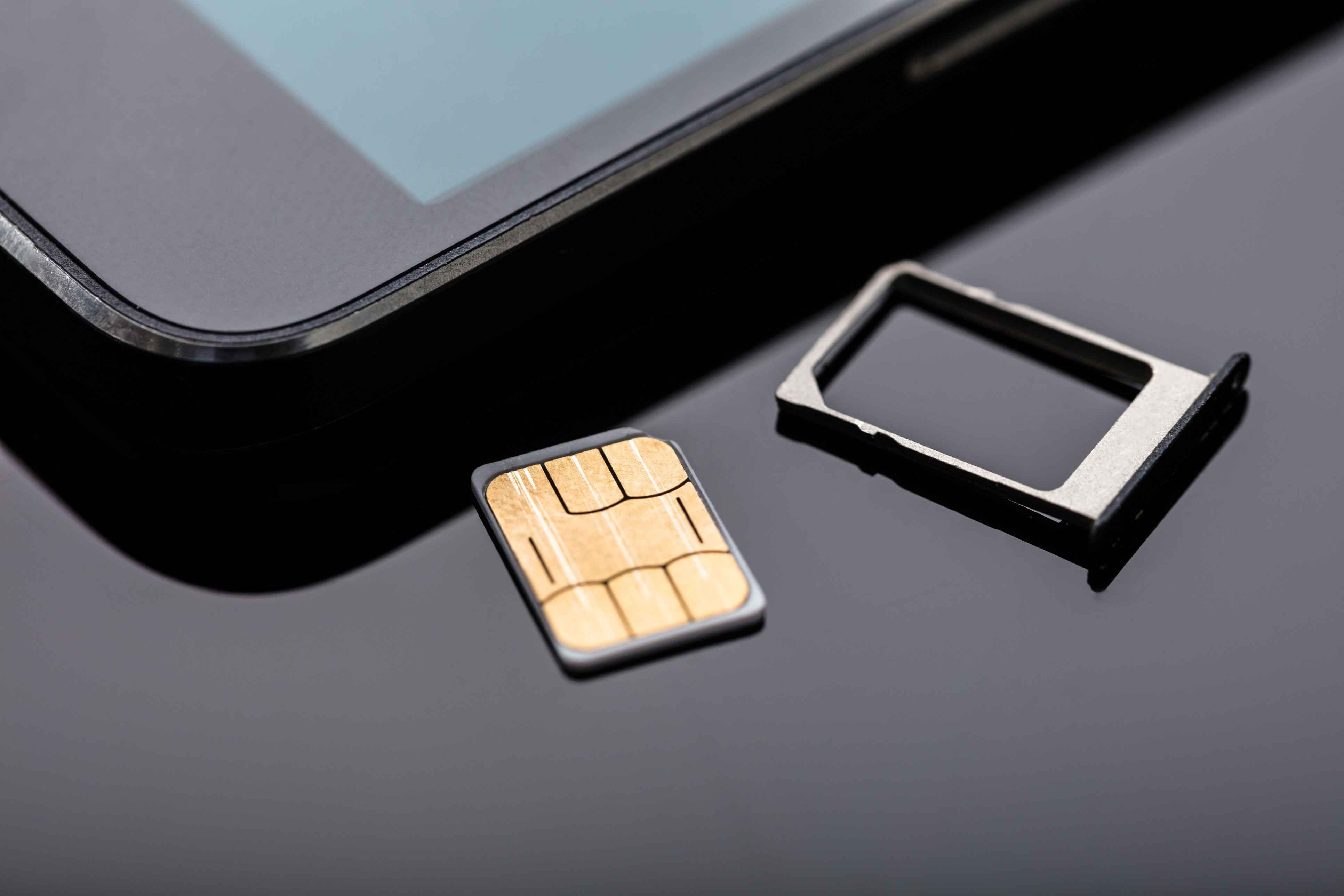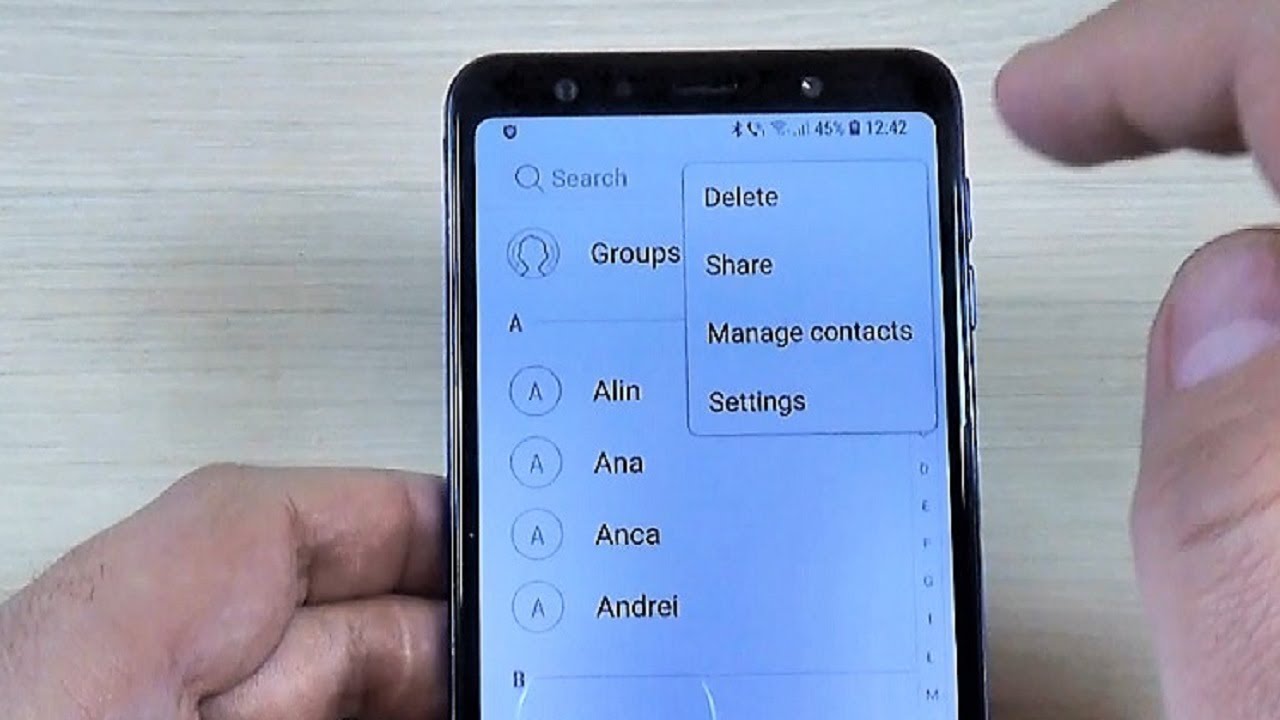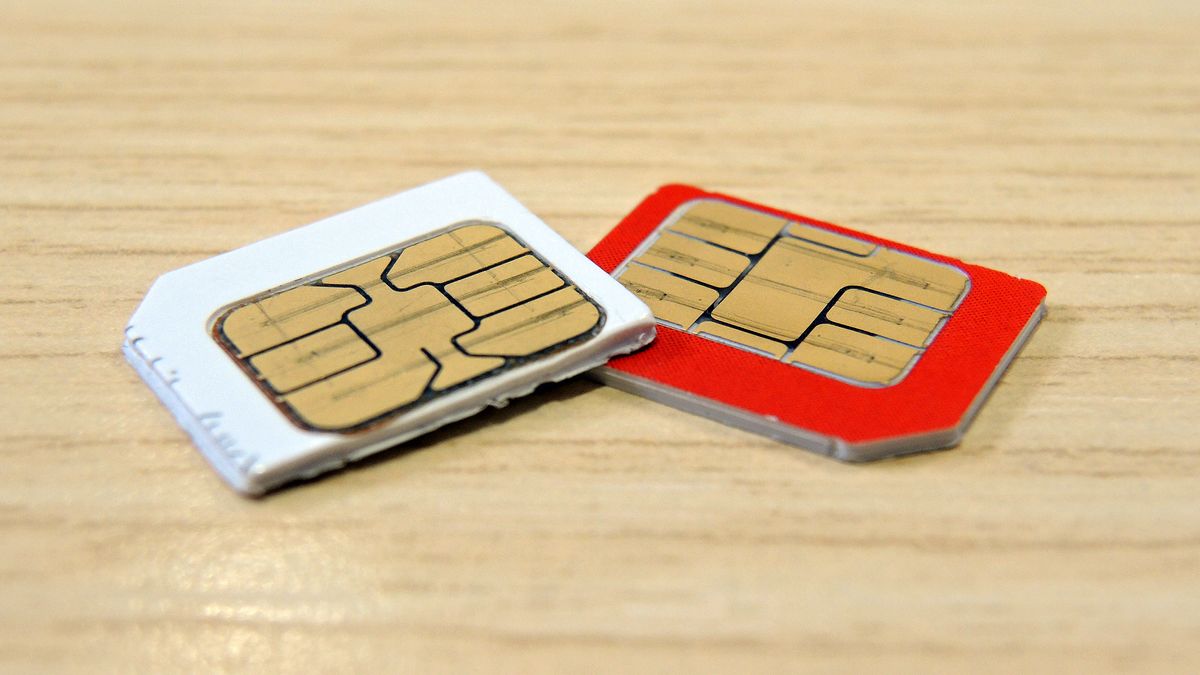Introduction
In today's digital age, mobile devices have become an integral part of our daily lives, serving as a hub for communication, entertainment, and productivity. At the heart of these devices lies a small yet powerful component known as the Subscriber Identity Module (SIM) card. Despite its diminutive size, the SIM card plays a crucial role in facilitating cellular connectivity and storing essential data that enables seamless communication.
The SIM card, typically located beneath the battery or in a dedicated slot on the side of the device, acts as a unique identifier for the user and the mobile network. It holds a wealth of information, including contacts, text messages, call logs, and network-specific data. Understanding the nature of the data stored on a SIM card, as well as the methods for accessing and protecting it, is essential for both consumers and professionals in the mobile technology industry.
In this comprehensive guide, we will delve into the intricacies of the data stored on a SIM card, shedding light on its significance and potential vulnerabilities. By exploring the types of data housed within a SIM card, the security measures in place, and the methods for accessing this information, readers will gain valuable insights into the inner workings of these ubiquitous mobile components. Additionally, we will highlight the risks associated with SIM card data and provide essential precautions to safeguard this sensitive information.
Join us on this enlightening journey as we unravel the mysteries of the SIM card and gain a deeper understanding of the valuable data it holds. Let's embark on an exploration of the SIM card's inner world, uncovering the secrets it safeguards and the measures to protect them.
What is a SIM Card?
A SIM card, short for Subscriber Identity Module, is a small, portable memory chip that serves as a vital component in mobile devices. It is designed to securely store the unique identification and authentication information of a subscriber, allowing them to connect to a mobile network. This tiny but powerful card essentially acts as the link between the user and the cellular network, enabling voice calls, text messaging, and data services.
The SIM card contains crucial data, including the International Mobile Subscriber Identity (IMSI), which is a unique identifier for the subscriber within the mobile network. Additionally, it holds the Integrated Circuit Card Identifier (ICCID), a unique serial number that distinguishes the SIM card itself. These identifiers are essential for authenticating the user and enabling access to the mobile network.
In addition to identification information, a SIM card also stores network-specific data, such as the Mobile Country Code (MCC), Mobile Network Code (MNC), and authentication key. These details are necessary for the mobile device to establish a secure connection with the network and ensure seamless communication.
Furthermore, SIM cards can contain user-specific data, including contacts, text messages, and call logs. This personal information is securely stored on the SIM card, allowing users to transfer their contacts and messages between devices while retaining the data even if the device is changed.
In terms of physical appearance, SIM cards are typically small, rectangular chips with metal contacts. They come in various sizes, including the standard SIM, micro-SIM, and nano-SIM, to accommodate different types of mobile devices. The SIM card is inserted into a dedicated slot in the device, often located beneath the battery or in a tray on the side of the phone.
Overall, the SIM card plays a fundamental role in enabling mobile communication and data services, serving as a secure repository for user identification and personal data. Its compact size belies its significance, as it forms the linchpin of connectivity for mobile devices, allowing users to harness the power of cellular networks for seamless communication and access to digital services.
Types of Data Stored on a SIM Card
The SIM card serves as a repository for various types of data, encompassing both essential network-specific information and user-specific data. Understanding the diverse array of data stored on a SIM card provides valuable insights into its multifaceted functionality and significance. Let's explore the different categories of data housed within a SIM card:
Contacts
One of the primary functions of a SIM card is to store contact information. This includes the names and phone numbers of contacts, allowing users to transfer their contact list between devices seamlessly. The ability to retain this data on the SIM card ensures that users can access their contacts even when switching to a new mobile device.
Text Messages
SIM cards also have the capacity to store a limited number of text messages. This feature allows users to retain important messages, ensuring that they are accessible even if the device is changed or upgraded. While the storage capacity for text messages on a SIM card is limited, it serves as a convenient backup for crucial communication.
Call Logs
The SIM card maintains a record of call logs, including details such as the date, time, and duration of calls. This information provides a historical overview of the user's communication activity, offering insights into past calls made and received. The storage of call logs on the SIM card facilitates the transfer of this data between devices, preserving a comprehensive record of past communications.
Network Information
In addition to user-specific data, the SIM card contains network-specific information essential for establishing a secure connection with the mobile network. This includes the Mobile Country Code (MCC), Mobile Network Code (MNC), and authentication key, which are integral to the authentication and encryption processes when connecting to the cellular network.
Security and Encryption
Crucially, the SIM card incorporates robust security measures to safeguard the stored data. It utilizes encryption techniques to protect sensitive information, ensuring that user data remains secure and inaccessible to unauthorized parties. This emphasis on security underscores the critical role of the SIM card in preserving the confidentiality and integrity of user data.
In essence, the SIM card serves as a versatile storage medium, housing a diverse range of data that is essential for both user convenience and network authentication. By encompassing contact information, text messages, call logs, network-specific details, and robust security measures, the SIM card stands as a linchpin of connectivity and data storage within the realm of mobile devices.
Contacts
Contacts are a fundamental component of the data stored on a SIM card, serving as a repository for essential contact information. The SIM card enables users to store a comprehensive list of contacts, including names and phone numbers, in a secure and portable format. This feature holds immense practical value, as it allows users to retain their contact list even when transitioning to a new mobile device.
The ability to store contacts on a SIM card offers a seamless solution for transferring essential contact information between devices. Whether upgrading to a new phone or replacing a lost or damaged device, users can simply insert the SIM card into the new device, instantly accessing their entire contact list. This convenience eliminates the need for manual entry or external backups, streamlining the transition process and ensuring continuity in communication.
Furthermore, the storage of contacts on a SIM card provides an added layer of security and accessibility. In the event of device loss or malfunction, users can rest assured that their contact information remains intact on the SIM card, ready to be utilized with a replacement device. This resilience against data loss enhances the overall reliability and convenience of the SIM card as a storage medium for essential contact details.
It is important to note that while SIM cards offer the convenience of storing contacts, they have a limited capacity compared to modern smartphones. As such, users may encounter constraints in terms of the number of contacts that can be stored on the SIM card. Additionally, certain advanced contact details, such as email addresses, photos, and additional notes, may not be supported by the SIM card's storage format.
In summary, the inclusion of contact storage on a SIM card underscores its practical utility as a portable repository for essential contact information. This feature aligns with the SIM card's role as a versatile and resilient component of mobile communication, offering users the convenience of seamless contact transfer and the assurance of data retention in various mobile device scenarios.
Text Messages
Text messages represent a significant facet of the data stored on a SIM card, providing users with the ability to retain crucial communication records in a portable and secure format. The inclusion of text message storage on a SIM card serves as a valuable backup solution, ensuring that important messages are preserved even when transitioning to a new mobile device.
SIM cards typically have the capacity to store a limited number of text messages, allowing users to safeguard essential communication threads. This feature proves particularly useful in scenarios where users need to replace or upgrade their mobile devices, as it enables them to retain access to critical text message exchanges without relying solely on the device's internal storage.
The storage of text messages on a SIM card also aligns with the principle of data portability, offering users the flexibility to transfer their communication history between devices seamlessly. By simply inserting the SIM card into a new device, users can access their stored text messages, ensuring continuity in their communication records without the need for manual data transfer or reliance on cloud-based backups.
Furthermore, the preservation of text messages on a SIM card enhances the overall resilience of the user's communication data. In the event of device loss, damage, or malfunction, users can rest assured that their essential text message history remains intact on the SIM card, ready to be accessed with a replacement device. This aspect of data retention contributes to the reliability and convenience of the SIM card as a secure repository for critical communication records.
It is important to note that the storage capacity for text messages on a SIM card is limited compared to modern smartphone storage solutions. As a result, users may encounter constraints in terms of the number of text messages that can be stored on the SIM card. Additionally, multimedia messages (MMS) and advanced message features may not be supported by the SIM card's storage format, necessitating alternative backup solutions for comprehensive message preservation.
In essence, the inclusion of text message storage on a SIM card underscores its practical value as a secure and portable repository for essential communication records. This feature aligns with the SIM card's role as a resilient and versatile component of mobile communication, offering users the convenience of seamless message transfer and the assurance of data retention in various mobile device scenarios.
Call Logs
The storage of call logs on a SIM card represents a pivotal aspect of the data repository, offering users a valuable record of their communication history in a portable and secure format. Call logs encompass essential details such as the date, time, and duration of calls, providing users with a comprehensive overview of their past communication activities.
By retaining call logs on the SIM card, users benefit from the convenience of preserving their communication history across different mobile devices. This feature proves particularly advantageous when transitioning to a new device, as users can seamlessly access their call logs by simply inserting the SIM card into the replacement device. This streamlined process eliminates the need for manual data transfer and ensures continuity in the user's call history.
Furthermore, the inclusion of call log storage on a SIM card enhances the resilience and accessibility of the user's communication records. In the event of device loss, damage, or upgrade, users can rely on the SIM card to safeguard their call logs, ensuring that valuable communication details remain intact and readily available for use with a new device. This aspect of data retention reinforces the reliability and practicality of the SIM card as a secure repository for critical communication records.
It is important to note that while call logs are valuable for preserving communication history, the storage capacity on a SIM card is limited compared to modern smartphone storage solutions. As a result, users may encounter constraints in terms of the number of call logs that can be stored on the SIM card. Additionally, advanced call log features, such as detailed call descriptions or categorization, may not be supported by the SIM card's storage format.
In essence, the inclusion of call log storage on a SIM card underscores its practical utility as a secure and portable repository for essential communication records. This feature aligns with the SIM card's role as a resilient and versatile component of mobile communication, offering users the convenience of seamless call log transfer and the assurance of data retention in various mobile device scenarios.
Network Information
The SIM card serves as a secure repository for a wealth of network-specific information, playing a pivotal role in establishing and maintaining a secure connection with the mobile network. At the core of this network-specific data are the Mobile Country Code (MCC) and Mobile Network Code (MNC), which are essential identifiers used to uniquely identify mobile networks worldwide. The MCC represents the country code, while the MNC distinguishes individual mobile network operators within a specific country. This information is crucial for the mobile device to identify and authenticate the available networks, enabling seamless connectivity and communication services.
In addition to the MCC and MNC, the SIM card contains an authentication key that forms the basis of the security and encryption mechanisms employed during the network connection process. This key, often referred to as the Ki (Authentication Key), is a highly sensitive and confidential piece of information that is securely stored on the SIM card. It plays a fundamental role in the authentication and encryption processes, ensuring that the communication between the mobile device and the network remains secure and resistant to unauthorized access.
The presence of network-specific information on the SIM card underscores its significance as a linchpin of connectivity and security within the realm of mobile devices. By securely housing the MCC, MNC, and authentication key, the SIM card enables seamless network authentication and encryption, laying the foundation for secure and reliable communication services. This emphasis on network-specific data aligns with the SIM card's role as a versatile and indispensable component of mobile connectivity, ensuring that users can access and authenticate with mobile networks with confidence and security.
Overall, the inclusion of network-specific information on the SIM card highlights its pivotal role in enabling secure and authenticated connectivity with mobile networks. This aspect of the SIM card's functionality underscores its significance as a secure repository for critical network data, reinforcing its position as a cornerstone of mobile communication and connectivity.
Security and Encryption
Security and encryption form the bedrock of the SIM card's functionality, underpinning its role as a secure repository for user-specific and network-specific data. The SIM card integrates robust security measures to safeguard the stored data, ensuring that user information remains confidential and inaccessible to unauthorized entities.
At the heart of the SIM card's security architecture is the utilization of advanced encryption techniques to protect sensitive information. The SIM card employs sophisticated cryptographic algorithms to encrypt user data, making it virtually impervious to unauthorized access or tampering. This encryption process ensures that the stored data, including contacts, text messages, and call logs, remains shielded from prying eyes, preserving the privacy and integrity of the user's communication records.
Central to the security framework of the SIM card is the incorporation of the Authentication Key (Ki), a highly sensitive and confidential piece of information securely stored on the card. The Ki plays a pivotal role in the authentication and encryption processes during network communication, serving as a unique identifier that facilitates secure interactions between the mobile device and the network. By leveraging the Ki, the SIM card establishes a secure and authenticated connection with the mobile network, mitigating the risk of unauthorized access and ensuring the confidentiality of user communications.
Furthermore, the SIM card integrates mechanisms to prevent unauthorized cloning or replication, bolstering its resilience against fraudulent activities. The card's security features are designed to detect and deter unauthorized attempts to duplicate its contents, thereby fortifying its role as a trusted and secure repository for sensitive data.
In essence, the emphasis on security and encryption underscores the SIM card's commitment to preserving the confidentiality and integrity of user data. By leveraging advanced encryption techniques and incorporating stringent security measures, the SIM card stands as a bastion of privacy and security within the realm of mobile communication. Its unwavering dedication to data protection and secure network interactions reinforces its pivotal role as a trusted guardian of user information, ensuring that sensitive data remains shielded from unauthorized access and manipulation.
How to Access Data on a SIM Card
Accessing the data stored on a SIM card involves utilizing specific tools and techniques to extract and manage the information securely. One common method for accessing SIM card data is through the use of a SIM card reader. This device allows individuals to retrieve the stored contacts, text messages, and call logs from the SIM card by connecting it to a computer or specialized reader. Once connected, the SIM card reader enables the user to access and manage the data through dedicated software, providing a convenient and efficient means of interacting with the information stored on the SIM card.
Additionally, many mobile devices offer built-in functionality to access and manage SIM card data directly. Users can navigate to the device's settings or SIM card management interface to view and manipulate the stored contacts, text messages, and call logs. This built-in access provides a seamless and user-friendly approach to interacting with the data stored on the SIM card, empowering individuals to manage their communication records with ease.
It is important to note that accessing SIM card data should be approached with caution and respect for privacy and security considerations. As the SIM card contains sensitive user information, including personal contacts and communication records, it is essential to adhere to ethical and legal guidelines when accessing and managing the data. Individuals should only access SIM card data with proper authorization and consent, ensuring that privacy rights and data protection regulations are upheld at all times.
Overall, the process of accessing data on a SIM card encompasses a range of methods, including the use of SIM card readers and built-in device functionality. By leveraging these tools and techniques responsibly, individuals can interact with the stored information in a secure and efficient manner, respecting the privacy and integrity of the data housed within the SIM card.
Risks and Precautions
The utilization of SIM cards as repositories for sensitive user information and network-specific data introduces inherent risks that necessitate thoughtful precautions to mitigate potential vulnerabilities. Understanding these risks and implementing proactive measures is essential for safeguarding the confidentiality, integrity, and accessibility of the data stored on SIM cards.
Risks
Unauthorized Access:
The data stored on a SIM card, including contacts, text messages, and call logs, is susceptible to unauthorized access if the card falls into the wrong hands. Unauthorized individuals may attempt to extract or manipulate the stored data for malicious purposes, posing a significant risk to user privacy and security.
Data Loss:
In the event of physical damage to the SIM card or the mobile device, there is a risk of data loss. Without proper backups or precautions, critical user information stored on the SIM card may become irretrievable, leading to potential disruptions in communication and data accessibility.
Security Breaches:
Sophisticated security breaches targeting SIM cards can compromise the confidentiality and integrity of the stored data. Unauthorized attempts to clone or manipulate SIM card contents pose a significant risk, potentially leading to unauthorized network access and privacy violations.
Precautions
PIN Code Protection:
Enabling a Personal Identification Number (PIN) code on the SIM card provides an additional layer of security, requiring the entry of a unique code to access the card's data. This precautionary measure helps prevent unauthorized usage and protects the SIM card from unauthorized access in the event of loss or theft.
Regular Backups:
Regularly backing up the data stored on the SIM card, such as contacts and text messages, to secure locations, such as cloud storage or external devices, mitigates the risk of data loss. By maintaining up-to-date backups, users can ensure the preservation of critical information in the event of device replacement or SIM card damage.
Vigilant Handling:
Practicing vigilant handling of SIM cards, including storing them in secure locations and avoiding exposure to physical damage, minimizes the risk of data loss and unauthorized access. Careful handling reduces the likelihood of SIM card damage and enhances the longevity of the stored data.
Security Updates:
Staying informed about security updates and best practices for SIM card management is crucial for mitigating potential security breaches. Regularly updating SIM card software and adhering to recommended security guidelines helps fortify the card against evolving threats and vulnerabilities.
By acknowledging the risks associated with SIM card data and implementing proactive precautions, users can enhance the security and resilience of the data stored on their SIM cards. These precautions serve as vital safeguards, ensuring that sensitive user information remains confidential, accessible, and protected from potential threats and vulnerabilities.
Conclusion
In conclusion, the SIM card stands as a foundational pillar of mobile communication, serving as a secure repository for essential user-specific and network-specific data. Through its capacity to store contacts, text messages, call logs, and critical network information, the SIM card plays a pivotal role in facilitating seamless connectivity and data accessibility for mobile device users.
The multifaceted functionality of the SIM card, encompassing data storage, network authentication, and robust security measures, underscores its significance as a linchpin of mobile communication. By securely housing user contacts, text messages, and call logs, the SIM card offers a convenient and resilient solution for data retention and transfer between devices. Furthermore, its role in storing vital network-specific information, including the MCC, MNC, and authentication key, forms the cornerstone of secure and authenticated network connectivity.
The emphasis on security and encryption within the SIM card's architecture reinforces its commitment to preserving the confidentiality and integrity of user data. Through advanced encryption techniques and stringent security measures, the SIM card safeguards sensitive information, ensuring that user privacy remains paramount.
However, it is essential for users to be mindful of the potential risks associated with SIM card data, including unauthorized access, data loss, and security breaches. By implementing proactive precautions such as PIN code protection, regular backups, vigilant handling, and staying informed about security updates, users can fortify the security and resilience of the data stored on their SIM cards.
In essence, the SIM card encapsulates the convergence of convenience, security, and connectivity within the realm of mobile devices. Its role as a secure repository for critical user information and network-specific data underscores its enduring significance as a cornerstone of mobile communication. By understanding the intricacies of the data stored on a SIM card and implementing prudent precautions, users can harness the full potential of this compact yet indispensable component, ensuring that their communication records remain secure, accessible, and resilient in the dynamic landscape of mobile technology.







